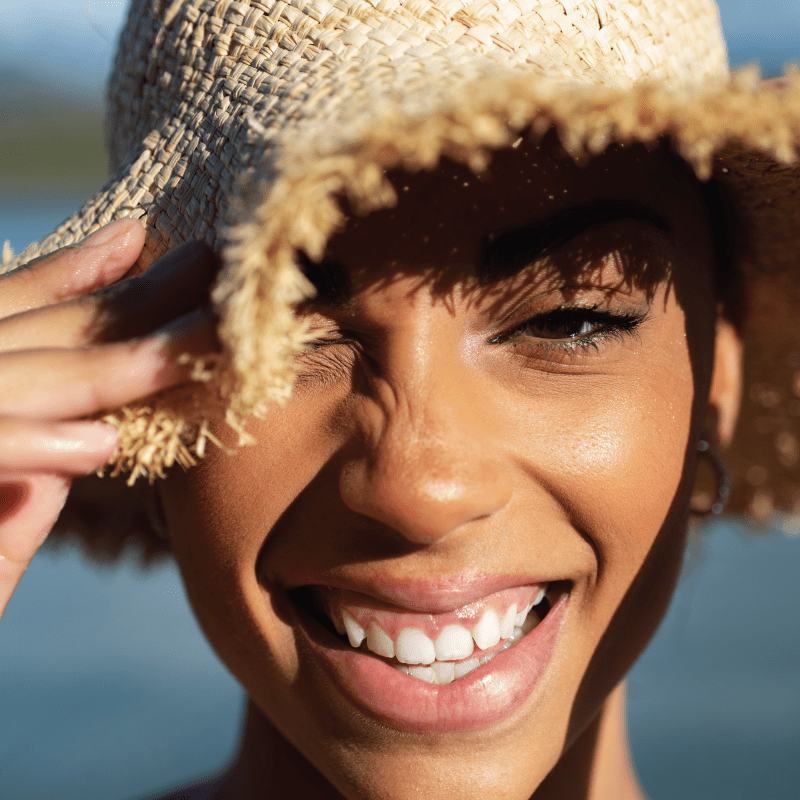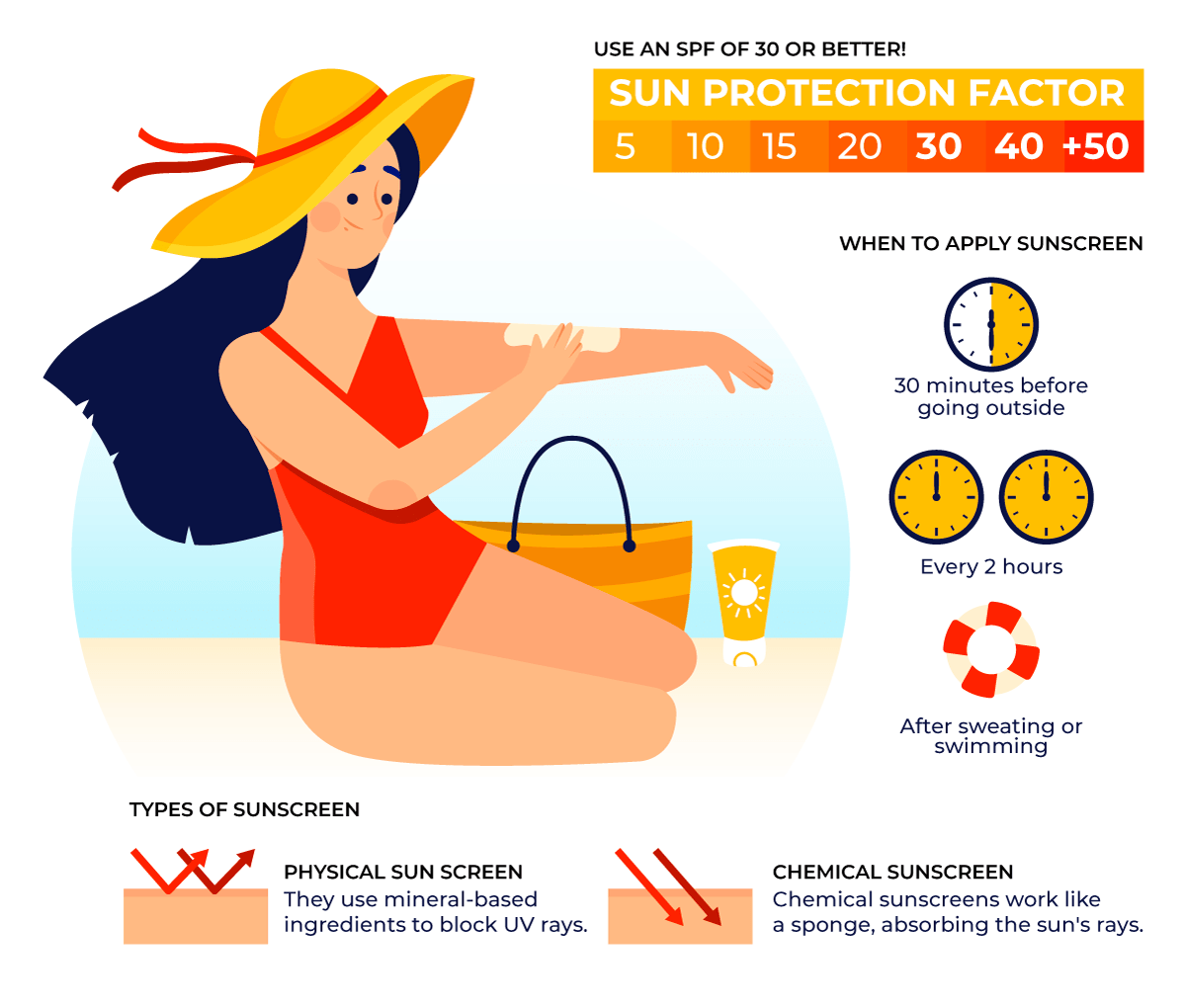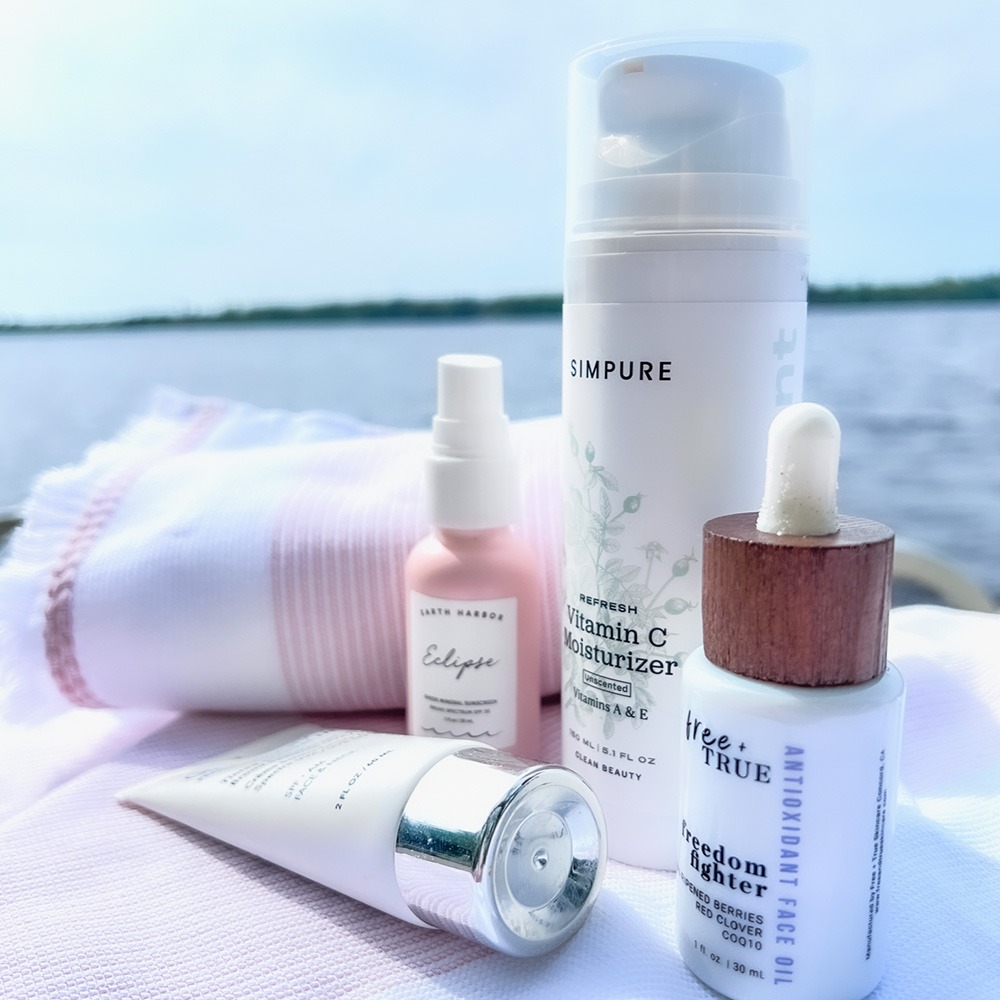DO YOU KNOW?
2 in 5 people have a genetic variation that affects their skin’s UV defenses.
Exposure to ultraviolet (UV) light from the sun accounts for 90% of the symptoms of early skin aging, skin damage, and skin cancer. Every time your skin is exposed to UV light, skin damage occurs. The cumulative effect of repeated sun damage causes epidermal DNA damage, persistent inflammation, and oxidative stress, negatively affecting the health and appearance of your skin.
Let’s learn the difference between Ultraviolet A and Ultraviolet B rays.

UVA Rays (known as the AGING rays)
UVA rays are primarily present between 8am – 10am and 2pm – 6pm, when the sun is at an angle, and become magnified on cloudy or overcast days and when reflected through glass, such as when driving or near windows. This is why Yudoyu recommends SUN PROTECTION EVERY DAY, rain or shine!
- Higher wavelengths can penetrate windows and clouds
- Damage the skin’s collagen and elastin and produces free radicals
- Responsible for 90% of skin aging symptoms, including wrinkles
- Produce an immediate tanning effect
- Partner with UVB to contribute to skin cancer
TANNING BED ALERT: UVA rays are the main type of light used in tanning beds. Instead of using one of these beds. Instead… Yudoyu recommends using a self-tanning lotion to create that summer glow.

UVB Rays (known as the BURNING rays)
UVB rays are most prominent between 10am -2pm, when the sun shines directly down. Unlike UVA rays, its spectrum isn’t strong enough to travel into the deeper layers of skin; therefore, most of the damage is done on the superficial layers. UVB rays:
- Make up about 5% of the UV rays from the sun.
- Wreak havoc on the top skin layers causing sunburns, peeling, swelling, pigmentation, and browning
- Damage skin cells and cause DNA mutations increasing the risk of skin cancer
Protecting Your Skin From UV Damage
Proper UV protection may help prevent photoaging and further damage and facilitate reversing some existing signs of aging.*
- If you go out in the sun, use a broad-spectrum sunscreen with an SPF of 30 or higher.
- Broad-spectrum sunscreens reflect and absorb UV radiation, protecting you from UVA and UVB radiation.
- Covering up! Wear a wide-brimmed hat to shade your head and face, and use UV-protective sunglasses.

Physical VS Chemical Sunscreen
PHYSICAL SUNSCREEN
This sunscreen works like a SHIELD, creating a full broad spectrum barrier that deflects UV rays from your skin. The ingredients zinc oxide and titanium dioxide meet FDA requirements for the claims of being safe and effective for protecting the skin.
Pros: provides immediate effectiveness from the time of application and does not clog pores.
Cons: may leave a white cast on the skin, but newer formulations have changed their mineral sunscreen into clear applications that don’t leave a white film.
BONUS: The mineral ingredients in physical sunscreen are thought to be better for the environment!
CHEMICAL SUNSCREEN
This sunscreen works like a SPONGE to absorb harmful UV rays before they penetrate your skin. Look for active ingredients like oxybenzone, and avobenzone.
Pros: tends to be easier to rub into the skin without leaving a residue.
Cons: allows some UVA rays to get through, and you must wait at least 20-30 minutes after application to go out in the sun.

Your genes play an essential role in how well your skin copes with UV rays.
Your yu-nique body has varying degrees of natural UVA and UVB protection. When your skin is exposed to sunlight or blue light, a photochemical process occurs, breaking down UV rays before they cause harm.
Visible Signs
PIGMENTATION SPOTS
- Blemishes and freckles
- Brown spots
- Uneven skin tone
REDNESS
- Broken capillaries
- Sun sensitivity
- Patches of redness
DEEP FURROWS
- Upper face deep lines
- Frown, expression lines
Internal Signs
- Increased UV radical damage
- Irregular cellular function
- Increased mitochondrial damage
- DNA structural damage
- Ineffective melanogenesis

Sunny Saviors!
If your DNA says that your UV Defense adds a higher risk to your skin health, we have help for you!
Yudoyu offers healthful products with ingredients to help boost your skin’s natural defense against harmful blue light and UV rays, and assist in repairing the visible signs of sun damage that have already occurred.
- Minerals that Provide Physical, Non-Comedogenic Sunscreen
- Antioxidants that Boost Blue Light, UV-A & UV-B Protection
- Superfoods that Strengthen Against & Repair Existing UV Damage

